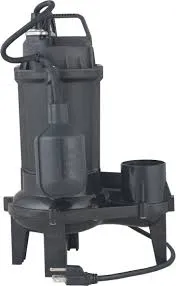Samoan
- Afrikaans
- Albanian
- Amharic
- Arabic
- Armenian
- Azerbaijani
- Basque
- Belarusian
- Bengali
- Bosnian
- Bulgarian
- Catalan
- Cebuano
- Corsican
- Croatian
- Czech
- Danish
- Dutch
- English
- Esperanto
- Estonian
- Finnish
- French
- Frisian
- Galician
- Georgian
- German
- Greek
- Gujarati
- Haitian Creole
- hausa
- hawaiian
- Hebrew
- Hindi
- Miao
- Hungarian
- Icelandic
- igbo
- Indonesian
- irish
- Italian
- Japanese
- Javanese
- Kannada
- kazakh
- Khmer
- Rwandese
- Korean
- Kurdish
- Kyrgyz
- Lao
- Latin
- Latvian
- Lithuanian
- Luxembourgish
- Macedonian
- Malgashi
- Malay
- Malayalam
- Maltese
- Maori
- Marathi
- Mongolian
- Myanmar
- Nepali
- Norwegian
- Norwegian
- Occitan
- Pashto
- Persian
- Polish
- Portuguese
- Punjabi
- Romanian
- Russian
- Samoan
- Scottish Gaelic
- Serbian
- Sesotho
- Shona
- Sindhi
- Sinhala
- Slovak
- Slovenian
- Somali
- Spanish
- Sundanese
- Swahili
- Swedish
- Tagalog
- Tajik
- Tamil
- Tatar
- Telugu
- Thai
- Turkish
- Turkmen
- Ukrainian
- Urdu
- Uighur
- Uzbek
- Vietnamese
- Welsh
- Bantu
- Yiddish
- Yoruba
- Zulu
Telephone: +86 13120555503
Email: frank@cypump.com
Dec . 20, 2024 18:51 Back to list
submersible slurry pump price
Understanding Submersible Slurry Pump Prices A Comprehensive Guide
In the realm of industrial pumping systems, submersible slurry pumps play a crucial role, especially in applications that require the transport of heavy, abrasive materials. These robust pumps are designed to operate submerged in the fluid they are pumping, making them an ideal choice for applications in mining, construction, and wastewater treatment. One of the most commonly asked questions surrounding these pumps is, What factors influence the price of submersible slurry pumps? In this article, we will explore the various elements that determine the price of these essential machines.
1. Pump Design and Construction
The materials used in the construction of submersible slurry pumps significantly affect their price. Pumps made from high-quality stainless steel, cast iron, or bronze tend to be on the higher end of the price spectrum due to their durability and resistance to corrosion and wear. A well-constructed pump will often have better performance and a longer lifespan, making it a worthwhile investment despite a higher initial cost.
2. Pump Capacity and Power
Submersible slurry pumps come in various sizes and capacities, which directly impacts their pricing. A pump’s capacity is typically measured in cubic meters per hour (m³/h) and is determined by the amount of slurry it can efficiently handle. Larger pumps with higher horsepower (HP) capabilities will generally be more expensive than smaller, less powerful models. As a result, when considering a submersible slurry pump, it’s essential to match the pump’s capacity to your specific application requirements.
3. Pump Features and Technology
Modern submersible slurry pumps incorporate advanced technologies that can enhance their performance and efficiency. Features such as variable speed drives, automatic shut-off, and remote monitoring capabilities can add to the overall cost of the pump. While these features may result in a higher price, they can lead to reduced operational costs and improved productivity over time. It’s essential to evaluate whether the additional features align with your operational needs before making a purchase.
4. Brand and Manufacturer
submersible slurry pump price

The brand and manufacturer of a submersible slurry pump can also influence its price. Well-established brands with a reputation for reliability and performance typically command higher prices than lesser-known manufacturers. However, investing in a reputable brand can result in better customer support, warranty options, and access to replacement parts, making it a smart financial decision in the long run.
5. Market Conditions and Supply Chain Factors
Economic factors and market conditions can also impact the price of submersible slurry pumps. During periods of high demand or supply chain disruptions, prices may rise due to scarcity. Additionally, fluctuations in raw material costs can affect manufacturing expenses, which are often passed on to the consumer. Staying informed about these market dynamics can help you time your purchase for the best value.
6. Customization Options
Some applications may require specialized solutions, leading to customized slurry pumps. Customization can include alterations to size, material composition, or additional features. While custom pumps will generally cost more than standard models, they can provide tailored solutions for specific operational challenges, often making them a worthwhile investment.
Conclusion
When it comes to purchasing a submersible slurry pump, understanding the factors that influence pricing is essential for making an informed decision. From construction materials and pump capacity to advanced features and brand reputation, each element contributes to the total cost.
Prospective buyers should carefully assess their individual needs, evaluate potential pump options, and consider not just the initial cost but also the long-term benefits of the investment. By doing so, you can ensure that you select a pump that not only meets your operational requirements but also provides the best overall value in terms of performance, durability, and efficiency.
-
High-Performance Air Pumps for Sand & Gravel | Efficient Transport
NewsAug.03,2025
-
ISG Series Vertical Pipeline Pump - Chi Yuan Pumps Co., LTD.|Energy Efficiency, Corrosion Resistance
NewsAug.03,2025
-
ISG Series Pipeline Pump - Chi Yuan Pumps | Energy Efficiency&Compact Design
NewsAug.03,2025
-
ISG Series Vertical Pipeline Pump - Chi Yuan Pumps Co., LTD.|High Efficiency, Low Noise, Durable
NewsAug.02,2025
-
ISG Series Vertical Pipeline Pump - Chi Yuan Pumps | High Efficiency, Low Noise
NewsAug.02,2025
-
ISG Series Vertical Pipeline Pump- Chi Yuan Pumps Co., LTD.|High Efficiency&Compact Design
NewsAug.02,2025










